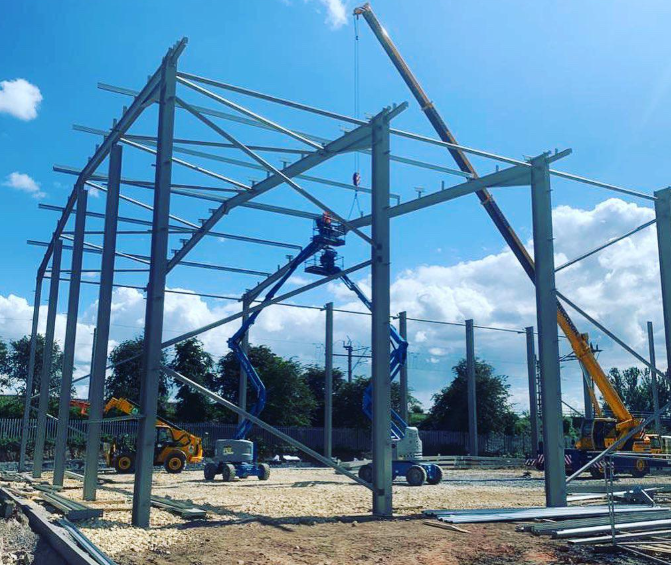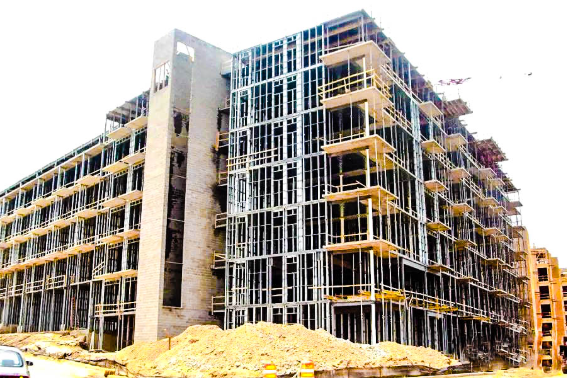Steel Structure Architectural Design

The key to the success of design lies in the integration of technical conceptualization and expression. During the deepening of schematic design, close collaboration with structural engineers, equipment engineers, and even mechanical engineers is essential. At this stage, technical expression becomes a natural outcome, where spatial forms, volumetric configurations, and connection details all significantly influence the design’s overall impact. Below, we elaborate on these aspects from multiple perspectives.
Technical Expression in Steel Structure Architectural Design
The conceptualization of architectural imagery is a creative process of shaping abstract concepts, representing one of the most challenging yet focal issues in architectural design. Reflecting on the relationship between architecture and technological advancements since the Industrial Revolution, it becomes evident that architecture often lags in responding to technological transformations. This reflects architecture’s profound role in social culture and its intrinsic connection to human lifestyles. Meanwhile, the ongoing information revolution is permeating every domain of social activity, integrating modern scientific thinking into architectural design. This has drastically altered project planning, architectural, and landscape design methodologies. The purpose of architectural design has evolved from pursuing aesthetics alone to solving practical problems, fundamentally transforming traditional perceptions of architecture. High-tech architecture, for instance, epitomizes this shift by emphasizing exquisite details and refined craftsmanship to showcase technical mastery and innovative "manufacturing" approaches.
High Demands for Detail Design in Steel Structure Architecture
As steel structure designs grow increasingly complex and refined, the requirements for detail design elevate. Detail design determines whether a component is finalized and its quality. In modern steel structures, exposed metal frameworks and connection nodes often highlight the building’s strong technological aesthetic. For example, the Paris Pompidou Center for Art and Culture (1977) showcases exposed steel columns, beams, and trusses, embodying both technological beauty and human ingenuity. Thus, maintaining high standards for detail design in steel structures is critical and deserves special attention.

Architectural Planning as an Influencing Factor
Steel structure design shares general architectural attributes, meaning architects cannot work arbitrarily. Client requirements and design briefs significantly shape the architect’s spatial and conceptual approaches. Clients expect designers to deliver superior performance while ensuring efficient collaboration among designers, market experts, and developers during decision-making. This phase emphasizes holistic design, coordination among professionals, and continuous exchange and integration of information and knowledge. Moreover, specialized steel structure design not only enriches design expertise but also effectively integrates resources and market insights, aligning architectural outcomes with clients’ commercial goals to minimize risks and maximize profitability.
Modern Characteristics of Steel Structures
High Prefabrication Levels, Reduced Costs, and Shortened Timelines
Steel structures achieve high prefabrication standards through modular coordination and industrialized mass production. Components of varying materials, shapes, and manufacturing methods gain interchangeability and universality. Integrated material processing and installation reduce costs and accelerate construction by over 40%, enabling faster capital turnover for developers and earlier project occupancy.Capability to Meet Ultra-Height and Ultra-Span Requirements
Steel’s uniform microstructure, near-isotropic properties, high strength, and modulus of elasticity allow lightweight yet robust structures. Its density-to-strength ratio is significantly lower than that of brick, concrete, or wood, enabling large spans and heights. Modern steel structures can now achieve spans exceeding 1,000 meters and heights up to 4,000 meters. Combined with cable and membrane systems, steel creates iconic structures like Tokyo’s Korakuen Stadium roof (28,000 m² membrane and steel cable system) and London’s Millennium Dome (320-meter diameter), showcasing steel’s unparalleled versatility in spanning vast spaces.



